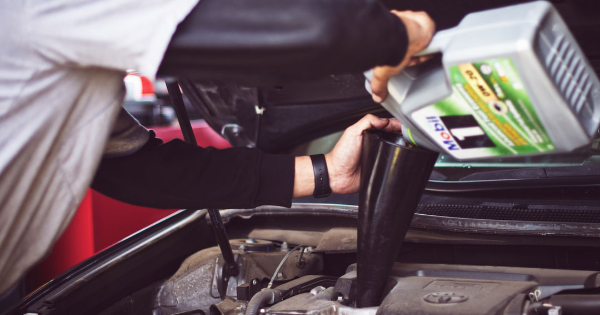
It’s no secret that a car is a big investment. In fact, after buying a house, it’s the second-largest investment you’ll ever make. But the costs associated with a new car don’t stop once you leave the dealership.
According to a study by the American Automobile Association, the yearly costs of owning and operating a vehicle add up to roughly $8,700 a year. That’s about $725 a month. The good news is that there are a variety of strategies you can use to help you cut those monthly expenses.
Here are a few key ways you can cut down on maintenance costs, fuel costs, and more.
Make your owner’s manual your best friend
One of the best ways to save money on monthly car expenses is to get familiar with your car’s regular maintenance schedule according to your owner’s manual. When you bring your car in for maintenance at the dealership, the dealership will typically give you a list of recommended repairs for your vehicle. If you don’t know your car’s regular maintenance schedule, you might feel pressured to take your mechanic up on their pitch.
But not all of the repairs your mechanic suggests are necessary. For instance, your dealership might suggest that you replace your transmission fluid, but you don’t need to worry about replacing your transmission fluid until your car has been driven at least 100,000 miles. Resist the temptation to give into your dealership’s recommendations and follow your owner’s manual to save on unnecessary repairs.
Handle easy repairs on your own
Some car repairs are best left to the mechanic. But if you’re handy and you have the time, you can make easier repairs on your own. Replacing your own car wipers can save up to $70 in labor costs, and paintless dent repair techniques and tool kits that you can find online can repair 80% to 90% of small dents.
Avoid aggressive driving
Aggressive driving, speeding, hard braking, and rapid acceleration are some of the fastest ways to waste gas. According to Oak Ridge National Laboratory, aggressive driving can lower your gas mileage by 33% at highway speeds and 5% around town. You may be even more likely to waste gas if your car already has poor fuel efficiency. There are approximately 15.5 million trucks on U.S. roads, and many of them are renowned for being gas-guzzlers.
Vehicles with the best gas mileage typically have between 25 to 37 mpg whereas less efficient vehicles have around 15 to 18 mpg. In terms of compact cars, the most fuel-efficient vehicle is the Ford Focus (37 mpg) and the least efficient is the Mercedes-Benz AMG S 65 (15 mpg), which is manufactured in 30 countries.
Whichever vehicle you drive, driving sensibly can help you cut down on fuel costs. Not only that, but it can save you wear and tear on your tires. Concrete might be the most used man-made material in the world, but it’s not exactly kind on your car. Aggressive driving can exacerbate that issue. You can also save on fuel costs by keeping your cruise control at 50 mph or below. Once your speed exceeds 50 mph, your gas mileage typically declines.
Don’t idle your vehicle
Many drivers will idle on the side of the road, in parking lots, or in their own driveways. But if you’re not getting back on the road within a minute or two, it’s better to turn your engine off.
Idling can cost you almost half a gallon per hour or more if your car doesn’t have the best fuel economy. In comparison, turning your vehicle off and back on only takes 10 seconds worth of fuel.
Car repairs, maintenance costs, and fuel costs can add up throughout the month. By following these tips and taking it easy on the road, you can reduce your fuel costs and keep unnecessary maintenance costs under control.


No Comments yet!